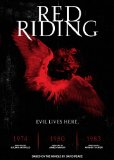| Reviews & Columns |
|
Reviews DVD TV on DVD Blu-ray 4K UHD International DVDs In Theaters Reviews by Studio Video Games Features Collector Series DVDs Easter Egg Database Interviews DVD Talk Radio Feature Articles Columns Anime Talk DVD Savant Horror DVDs The M.O.D. Squad Art House HD Talk Silent DVD
|
DVD Talk Forum |
|
|
| Resources |
|
DVD Price Search Customer Service #'s RCE Info Links |
|
Columns
|
|
|
Red Riding Trilogy
THE MOVIE:
"Little monsters run and roam
Little blighters in the carpet
They're hidden in the walls
In the attic and in the cupboards
And in the House of Lords
The chamber of horrors at Madame Tussauds
Out with the old we've got to make room for them all."
-- Luke Haines, "Leeds United"
"You see this? This is the North. And we do what we want."
-- Bob Craven, Red Riding: In the Year of Our Lord 1974
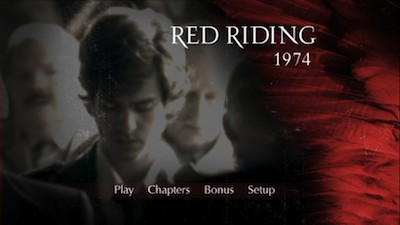
The Red Riding Trilogy is a series of films produced for British television and based on a series of novels by David Peace (The Damned United). The novels chronicle crimes spanning a decade in the Yorkshire suburbs in Northern England. An ambitious film project, it ropes in three different directors to tackle three of Peace's four books (1977 was dropped), creating a stylistically similar yet distinctive cinematic trio. Each film stands alone, but they also inform each other. Characters come and go, and events are shared between them. An incident in one movie may not have repercussions until another movie, illustrating the long-term effects of crime and the way corruption roots itself into a community and how long it takes to pull it out.
The first film in the series is Red Riding: In the Year of Our Lord 1974, and it focuses on an idealistic young reporter assigned to the case of a missing little girl. She was last seen wearing a red hoodie, which kicks off the thematic connection to the Red Riding Hood fairy tale and the innocence lost it represents. The reporter, Eddie Dunford (Andrew Garfield, The Imaginarium of Dr. Parnassus and the next Spider-Man), is a hometown boy who left Yorkshire to work for a paper in the South. He has returned under whispers of disgrace and is trying to muscle his way onto the crime desk despite the firmly planted feet of the eternally besotted veteran journalist Jack Whitehead (Eddie Marsan, Happy-Go-Lucky). He thinks he has his big break when he realizes that this little girl is not the first to go missing.
Eddie's digging leads him to various places. The local land developer John Dawson (Sean Bean, Percy Jackson & the Olympians: The Lightning Thief) has the town in his pocket, and the police do his bidding--including burning a gypsy camp so Dawson can build a shopping mall. His house is directly up the hill from the apartment of one of the missing girl's mothers (Rebecca Hall, Vicky Cristina Barcelona), and when Eddie gets involved with her, he also gets beaten up by a couple of sadistic cops, one of whom is the man quoted at the outset: Bob Craven (Sean Harris, Brothers of the Head). Eddie's colleague Barry (Anthony Flanagan, Shameless) is convinced Dawson is involved, and when he turns up dead, a male prostitute with the not-too-subtle name of B.J. (Robert Sheehan) delivers a mountain of evidence that Barry left with him. It should put a nice bow on top of the whole affair, if only Eddie has the mettle to tie it up.
Red Riding: In the Year of Our Lord 1974 is a grim, yet riveting, piece of work. This initial outing is directed by Julian Jarrold (Becoming Jane), working from a script by Tony Grisoni (Fear & Loathing in Las Vegas, In This World), who wrote the entire Trilogy. Jarrold immerses the viewer in the drab grays and browns and the shaggy hair of the 1970s. There is fog outdoors, pervasive cigarette smoke indoors. The gory details of the crime are mainly left off camera because the depraved indifference of the community he portrays means the dead little girls are secondary, a footnote in the selfish pursuits of the players. Eddie claims to care, but it's hard to say how much he does. Justice would just be a byproduct of his need to be right. It's a good start to the series, answering just enough of what is going on to make 1974 a satisfying crime picture all on its own, but leaving enough dangling to entice viewers to wonder what might happen next.
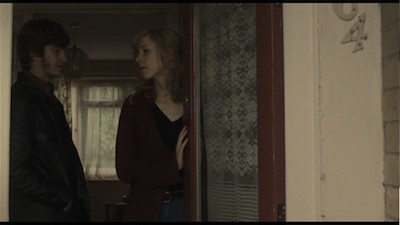
What happens next is Red Riding: In the Year of Our Lord 1980. The narrative jumps ahead six years and seemingly takes a total detour. The second movie isn't as much about missing girls--even though the real-life Yorkshire Ripper provides the backdrop for the tale--it's more about scandal and corruption inside the police force. It's a shift comparable to the surprise move away from the drug-slinging tales of the first season of The Wire to cover the waterfront and the unions in the second season. What at first appears to be a left turn is instead a deepening of the narrative. It reaches into the muck to show us how far down the bad stuff goes, how rotten deeds are systemic and any attempt to alter how things are done will be an effort at once herculean and heroic. Foolhardy, as well.
1980 is helmed by James Marsh (Man on Wire) and stars Paddy Considine (Cry of the Owl) as Peter Hunter, a police officer brought in from an outside precinct to investigate the activities of the Yorkshire force and hopefully find the Ripper, who has been murdering prostitutes for several years. Many of the same cops who impeded Eddie's investigation in 1974 are still on the job, including Craven and Maurice Jobson (David Morrissey, The Other Boleyn Girl). We don't get to know Jobson very well in 1974, but he's responsible for one very important event in that film that will continue to have consequences in the others. The climax of 1974, as we find out, actually brought Hunter to town back then, too. He was assigned to try to sort out the violence. This means he has also crossed paths with Craven, whose silence was a major reason Hunter failed to solve the case.
Red Riding: In the Year of Our Lord 1980 is more of a procedural, spending most of the time in the police station rather than out in the thick of it. Marsh styles it in a more clinical manner. Surfaces are clean and shiny, and the miasma of the 1970s has drifted away. Not that matters don't get sticky. Part of the complexity of the plot is that Hunter is meant to be the good cop policing the bad, but he's got his own moral issues. For starters, he cheated on his wife (Lesley Sharp) with one of the officers (Maxine Peake) he's brought along on his task force. There are also uncomfortable parallels between what has happened in their illicit affair and circumstances surrounding the murder victim they both believe was not actually part of the Ripper's spree.
Thematically, 1980 continues to crush idealism. There are some aesthetic connections to be made between these films--and 1980 in particular--and David Fincher's Zodiac. Cops working together to find an unknown killer who sometimes leaves taunting clues, aided by the press--yet more about the investigation than the violence. The difference is that in Fincher's film, the good guys never stop clawing their way out of the mess; in Red Riding, the mess just becomes more pervasive and swallows them. It's like No Country for Old Men's dismal tide has washed up on the shores of England.
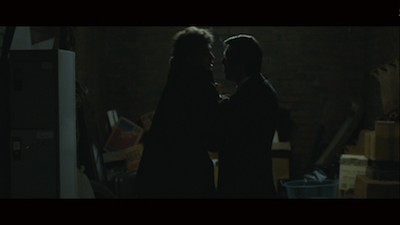
The trilogy concludes with Red Riding: In the Year of Our Lord 1983, and this one more directly relates back to events from 1974. There is a man (Daniel Mays, The Bank Job) who was accused of the kidnappings in the first film who has yet to get his day, and we also have the lingering questions about the roles played in all this by B.J. and the priest Martin Laws (Peter Mullan, Boy A), both of whom are on the streets and see things and both of whom distrust the police force. B.J. actually takes a very active role this time around, as does David Morrissey's conflicted detective, Maurice Jobson. They are joined by a third man, a new character by the name of John Piggott (Mark Addy, Robin Hood). He is a two-bit lawyer, and also the son of a policeman.
Anand Tucker (Shopgirl) takes over for the finale, and he lights up this film so it's bright and sparkling. This is fitting, as in terms of story, this installment is all about illumination. It starts by exposing the actual backroom deal that gave Yorkshire over to the forces of the criminal underworld, and then it sheds the spotlight on all the dirty secrets that have been buried until now. Sometimes literally. Light is Tucker's toy. Beams of light slice through scenes like lines connecting plot points. More scenes take place in the daytime, and the climax literally shows characters emerging into the sun. It's a finale that some feel is maybe too dramatic, but personally, after five hours of darkness and evil, I think it's one that is wholly earned.
There are a lot of narrative and visual motifs that connect the Red Riding Trilogy. All three films, for instance, feature some kind of cremation. In the first two, we actually see the funeral of characters who have died; here, it's Piggott bringing his mother's ashes home. Piggott is also part of all the fairy tale and animal references. His name is meant to be on the nose: he is the industrious little piggy who won't give in, who goes up against the wolves and the badgers and fights for what is right. Likewise, B.J. tells us stories in rhyme, and there is a new element of mysticism introduced via a psychic medium (Saskia Reeves, The Tesseract) whose magic unclogs Jobson's soul. Tucker uses doors and windows and other frames to give his images a wonky angle, like pictures in an imaginative storybook.
In addition to illumination, the main theme ofRed Riding: In the Year of Our Lord 1983 is redemption. Jobson has to make up for his lost honor, and Piggott has ruined his career through gluttony and pill popping. (His dad also died in disgrace.) B.J.'s life as a hustler has run its course, as well. He's an interesting character, and Robert Sheehan is interesting in the role. He is a mystery that we can't quite fathom, yet somehow we fully know him. Of all the male heroes, he is the only one who is sensitive and who displays any outward emotions and also demands it of others (a task otherwise reserved for the mothers of the series). The investigators--Eddie Dunford, Pete Hunter, Maurice Jobson--are all thinkers, everything about them is interior. We watch them smolder as the truth becomes impossible to deny. Losing control, succumbing to emotions, only gets them in trouble. Love comes with a high price, and it costs B.J., too, but he manages to come out the other side with his feelings intact.
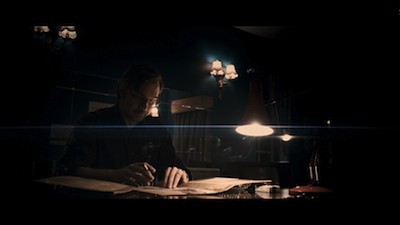
The Red Riding Trilogy is the kind of rich serialized storytelling that only TV can really afford us right now. American movie studios would never invest in something like this, something that requires a commitment and that is unrelenting in its grim outlook. It's akin to watching three compact seasons of a good cable television series. Naturally, given how barren the Hollywood idea farm is these days, Red Riding has already been optioned for an American remake, with Steve Zaillian and Ridley Scott, the team behind Hannibal and American Gangster, attached to write and direct. This joins The Girl with a Dragon Tattoo and Let the Right One In as part of a current trend of remaking foreign films for American audiences. Apparently, it's not just subtitled movies we won't see now, it's also ones with accents. Like those other two films, the idea of another version of Red Riding is a colossally bad one. There is no improvement needed. And it doesn't take a genius to know that the great innovation the U.S. producers will come up with is to compact it even further, to turn 1974 and 1983 into one narrative.
Don't wait for this to happen. Get the story now, in its original form. You know they won't do it right. Hell, they probably won't even keep the great soundtrack of old soul songs. Bloody useless!
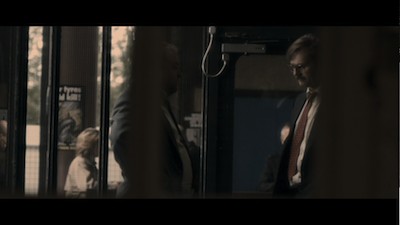
THE DVD
Video:
The image transfers on the Red Riding Trilogy are all anamorphic, and though the boxes say that the second and third movies are 1.85:1, they are actually 2.35:1. They look pretty good, though not perfect. 1974 in particular, which is the only one in 1.85, is grittier. In some ways, this is by design, in others, not. The dark scenes can have some spotty blacks, and there is the occasional soft edging in bright scenes, as well. Things improve on the wider images. Perhaps it's meant to reflect the change in the eras, and as the 1980s come on, everything gets more polished and sharper? If so, then maybe 1974's glitches aren't really glitches. Either way, it's great how clearly you can see the different styles of the different directors and the aesthetic shifts that befit the mood and timeframe of each installment.
Sound:
All three movies have a 5.1 audio mix, and the soundtrack work is great. There is an excellent balance between the various elements. The only complaint I would have is some of the whispered dialogue is mixed very low, and not just hard to hear, but also hard to decipher due to the actors' accents--at least to my uncouth American ears. I was tempted at times to back up and turn on the English Closed Captioning.
Spanish subtitles are also available.
Extras:
The Red Riding Trilogy comes packaged in a slipcase with each movie in its own slimline plastic case.
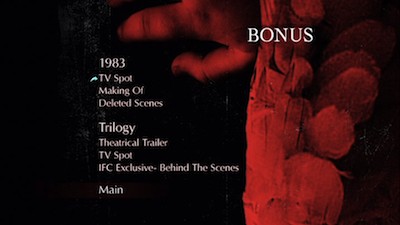
Each film has its own special features. For 1974, it's a television commercial, an interview with director Julian Jarrold (just over 11 minutes), and a handful of deleted scenes (just over 9 minutes). The most substantial of these takes up 5 of those minutes and shows Eddie searching a possible suspect's home.
1980 also has a TV commercial, as well as nearly 19 minutes of a "making of" featurette that takes us down on set and really gets into the production. There are 7 minutes of deleted scenes, mostly expository elements that proved unnecessary. A cut scene with Hunter and his wife is overly melodramatic and would have slowed Peter's disintegration in the third act. In fact, there are two other scenes with wives that both would have shifted the movie into different territory and were smart excisions. (Indeed, since mothers and wives are regularly sidelined in the film, forgotten about by the men on the job, some of this wouldn't fit.)
1983 mimics 1980 in that is has the same elements: commercial, making-of, and deleted scenes. The making-of is considerably shorter, less than 7 minutes; the deleted scenes run about 8 minutes. These seem mainly incidental, and some of them involving Piggott's fantasies are definitely things that needed to be left out.
In addition to these, 1983 also has extras for the trilogy: an American theatrical trailer and a TV commercial, and a 3-minute spot made for the IFC channel.
FINAL THOUGHTS:
Highly Recommended. The Red Riding Trilogy is an ambitious cinematic adaptation of David Peace's interlocking novels about murders and corruption in Yorkshire, England. Spanning a full decade, 1974 to 1983, this trio of films follows the entrances and exits of a variety of characters on the hunt for child kidnappers and serial murderers, but it ends up being about much more than that--the evil that men do in all corners of a community, not just the stuff that gets headlines, and how it infects every aspect of life. Dark and unrelenting in its depiction of human foibles, it also seeks out genuine happiness and the peace that comes with sticking to one's guns. Idealism may take a kicking, but it always gets back up somehow, with someone, to continue on.
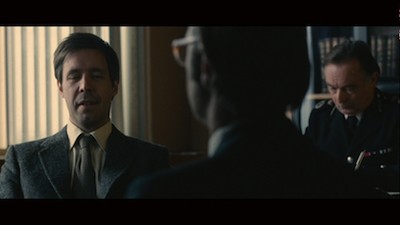
Jamie S. Rich is a novelist and comic book writer. He is best known for his collaborations with Joelle Jones, including the hardboiled crime comic book You Have Killed Me, the challenging romance 12 Reasons Why I Love Her, and the 2007 prose novel Have You Seen the Horizon Lately?, for which Jones did the cover. All three were published by Oni Press. His most recent projects include the futuristic romance A Boy and a Girl with Natalie Nourigat; Archer Coe and the Thousand Natural Shocks, a loopy crime tale drawn by Dan Christensen; and the horror miniseries Madame Frankenstein, a collaboration with Megan Levens. Follow Rich's blog at Confessions123.com.
|
| Popular Reviews |
| Sponsored Links |
|
|
| Sponsored Links |
|
|
| Release List | Reviews | Shop | Newsletter | Forum | DVD Giveaways | Blu-Ray | Advertise |
|
Copyright 2024 DVDTalk.com All Rights Reserved. Legal Info, Privacy Policy, Terms of Use,
Manage Preferences,
Your Privacy Choices | |||||||









